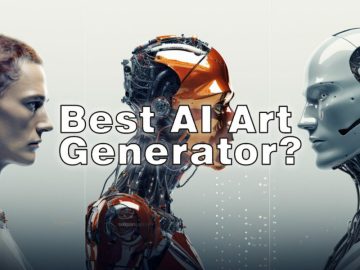Is This AIâs iPhone Moment?
Adobe Stock
Today, the term âiPhone momentâ is frequently used to refer to a technology breaking through into the mainstream. The release of Appleâs first phone back in 2007 marked the beginning of the smartphone era – from then on, it became normal for everyone to go about daily life with a powerful, internet-enabled computer in their pocket.
The effect this had on society was huge. Although the internet, online shopping and social media had been around for a while, they were generally confined to desktop computers. This meant that only those with access to a computer, either at work or in the home, was onboard with the online revolution. Suddenly this was no longer the case and the internet was available to everyone, everywhere.
Appleâs recent announcement that it has partnered with OpenAI to bring ChatGPT-style services to its mobile devices (as well as its desktop computers) could well be the âiPhone momentâ (literally) for generative AI.
If your work, business, or interests revolve around technology, there’s already a good chance that you’ll be using generative AI daily. However, for everyone else, recent research suggests that it hasnât quite cracked the mainstream.
But that could be about to change if the average smartphone user is about to receive a major AI-powered makeover. Integrating generative AI into the pockets of millions of people in a way that seamlessly fits into their everyday lives could be as transformative to society â if not more so â than the arrival of internet-enabled phones. While this has the potential to be hugely democratizing and empowering in amazing ways, it could also present some tough challenges.
What Is A Technological âiPhone Momentâ?
An iPhone moment is more than just a technology suddenly becoming hugely popular. The genius of Appleâs vision was to create a device that was so intuitive and user-friendly that anyone who saw it immediately realized that it could change their life.
It set new standards for user experience and functionality and ushered in the âapp economy,â introducing the app store, where a tool for just about any task could be found.
There are already hundreds, if not thousands, of generative AI tools and applications. Still, theyâre mostly targeted at business, creative or technical use cases, and people might not immediately understand how they would fit into their lives. General-purpose tools like ChatGPT, on the other hand, might appear to be too broad and lack specific functionality that people would find useful day-to-day.
If anyone can create the shift in perception necessary to change this, then history suggests that itâs Apple. Integrating it across the suite of tools that millions use every day for keeping in touch with friends, shopping, navigating, and entertainment could easily be the move that brings AI to the masses. For example, Siri is one of the most widely used personal digital assistants in the world, and supercharging it with AI could normalize human-to-machine conversations that go far beyond the âvoice commandâ model weâre used to today. And how about giving Apple Music or Apple Navigation the ability to chat away with users, helping us choose what music to listen to or what route to take in a conversational way?
By making AI more user-friendly and obviously useful, the partnership between Apple and OpenAI has the potential to create a transformational shift in societyâs relationship with technology. But it could create some pretty big problems, too â¦
Is AI Ready For The Mainstream?
So AI today certainly isn’t without its problems, and the danger of everyone suddenly starting to use it is that those problems could be magnified in some scary ways.
Letâs start with a big one â the environment. Itâs an unavoidable fact that AI today uses huge amounts of energy and also generates a worrying amount of emissions. If it goes mainstream and millions more of us are using it every day, thatâs only going to increase. This would create huge problems for a world where reducing our carbon footprint is a priority.
Then thereâs the problem of AI hallucination. Anyone who has used a tool like ChatGPT for any length of time will have realized that it sometimes makes things up. While this isnât always a problem when weâre using it in a limited way for drafting emails, for example, which can easily be proof-read and fact-checked, it could be more of a problem if millions of people are suddenly using it for day-to-day activities like navigating journeys, reminding them to do important things, or managing their daily schedules.
On top of that there are issues of privacy and data security. How do we ensure that casual, everyday users understand the risks of putting personal data into opaque and often unaccountable AI systems with little understanding of how itâs going to be stored, processed and shared?
If Elon Musk â one of the original founders of OpenAI â is now threatening to ban Apple devices from his workplaces due to his concerns over privacy, itâs probably a problem we should take seriously.
Unlike its rivals, Apple didnât have a (publicly available) generative AI of its own before the announcement of this partnership. So, it makes sense that it would want to work with OpenAI â the breakout star of the generative AI revolution.
But just as the mainstream adoption of the internet and smartphones brought challenges that society is still facing, so too will the integration of generative AI with everyday life.
We can take some reassurance from the fact that Apple has a relatively good track record when it comes to safeguarding user privacy. But will it be able to mitigate the risks of massively scaled AI hallucination and carbon emissions?
For better or worse, this is a partnership thatâs likely to lead to big changes for us all. Addressing these challenges will be critical to ensuring the mainstreaming of generative AI takes place in a way thatâs beneficial to us all without doing further harm to society or the planet.





![Elon Musk Sparks AI Debate With Viral Kamala Harris Deepfake Video [Watch] Elon Musk Sparks AI Debate With Viral Kamala Harris Deepfake Video [Watch]](https://virtual-coach.com/wp-content/uploads/2024/07/elon-musk-kamala-harris-360x270.png)